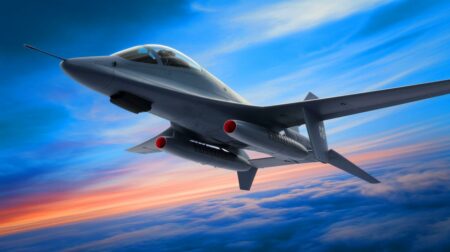| IN A NUTSHELL |
|
In recent years, the field of artificial intelligence (AI) has made significant advancements, particularly in the realm of military applications. The latest breakthrough comes from China, where researchers have developed an AI system capable of outperforming human pilots in high-intensity dogfight simulations. This novel system represents a tenfold improvement over previous models, thanks to its sophisticated use of infrared imaging and AI-driven predictive modeling. The technology’s success in anticipating complex aerial maneuvers marks a significant milestone in AI development, opening up new possibilities for military strategy and autonomous systems.
AI focused on physical mechanics of enemy aircraft
Traditional AI systems have struggled to counter the unpredictable and non-linear maneuvers of human pilots. These systems relied heavily on trajectory-based predictions, which often fell short in real-world scenarios. However, Chinese researchers have shifted their focus to the physical mechanics of enemy aircraft, marking a revolutionary change in AI air combat strategies.
By utilizing a modified YOLOv8 neural network, the AI system analyzes infrared imagery to detect minute deformations in an opponent’s control surfaces. This includes components like the F-15’s rudder and elevator, which are crucial for maneuvering during flight. Real-time observations of these components are fed into a long short-term memory (LSTM) network enhanced with attention-weighing mechanisms. This allows the AI to predict maneuvers before they are fully executed, providing a critical edge in combat scenarios.
Tenfold improvement when compared to traditional models
The novel AI system’s performance is a significant leap forward from earlier models, showing a tenfold improvement in simulations. This precision could potentially allow automated systems to target specific areas, such as the cockpit, if necessary. Tested against high-difficulty flight profiles that mimic real-world tactics, the AI has demonstrated remarkable accuracy.
Researchers noted that while human pilots rely on instinct and unpredictability, their physical maneuvers have mechanical precursors. By focusing on these precursors, the AI can effectively predict an opponent’s next move. This capability not only enhances the AI’s predictive accuracy but also reduces the time window available for human pilots to evade attacks, offering a strategic advantage in combat situations.
AI anticipated trajectory shifts within milliseconds
The AI’s ability to anticipate trajectory shifts within milliseconds is a testament to its advanced technological capabilities. In one simulation, an F-15 released munitions at low altitude and then executed a sharp ascent, a maneuver requiring precise control-surface coordination. In another scenario, the jet performed rapid, erratic maneuvers to evade fire, marked by violent control-surface adjustments.
In both instances, the AI system anticipated these trajectory shifts almost instantaneously, effectively eliminating the window for evasion. This level of precision underscores the potential for AI to revolutionize air combat, providing military forces with an unparalleled strategic advantage. The implications of such technology extend beyond dogfights, potentially influencing broader military strategies and defense systems.
China advancing AI usage
China’s advancements in AI are not limited to military applications. The nation has been at the forefront of AI usage across various sectors, from facial recognition and fintech to drones and 5G technology. Unlike nuclear weapons, where governments led the charge in development, AI technologies have predominantly been driven by private firms and university researchers.
By 2018, China had filed 2.5 times more AI technology patents than the United States. Additionally, China graduates three times as many computer scientists as the U.S. annually, positioning the country as a global leader in AI innovation. As governments in Washington and Beijing work to integrate these advancements, the military establishments are essentially playing catch-up, adapting private-sector innovations for defense purposes.
The rapid evolution of AI in air combat simulations and other sectors raises important questions about the future of military strategy and global security. With AI systems now surpassing human capabilities in certain areas, how will nations balance the ethical implications and strategic advantages of deploying such technology in real-world scenarios?
Did you like it? 4.6/5 (28)









Wow, AI is taking over everything these days! Should we be worried about it in warfare? 🤔
China’s AI advancements are impressive, but how does this affect global military balance?
Can AI really outperform human instinct in real-life combat situations?
Thanks for the article! It’s fascinating to see how AI is being used in military applications.
This is either really cool or really scary… I haven’t decided yet!
I’m skeptical. Can AI truly handle the unpredictability of dogfights?
So what’s next? AI-controlled armies? 😳
Is this technology exclusive to China, or are other countries also developing similar AI systems?
The United States already had that technology at least 6 months ago and they tested against our top-notch pilots. Needless to say the Al controlled airplanes won every time
If China is doing it, you can bet other western countries are too. Wouldn’t be surprised if China copied it from some country
If China is doing it I’m sure they got the idea from another source, that is someone else.
Interesting read! But how reliable are these simulations compared to actual combat?
When emotional responses are removed from stressful situations training is always front, center, & on top. It’s all in the timing, faster is gooder🤔
AI predicting maneuvers sounds like sci-fi coming to life!
How long before AI is used in every aspect of military operations?
Just drop a depth charge on the cocksucker. Useless machine other than evil warfare. Fuck China! And deport all of them from the USA.
If China is doing it I’m sure they got the idea from another source, that is someone else.
Cool